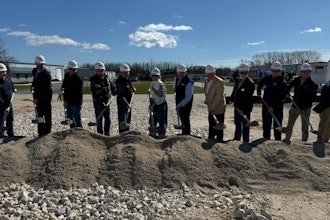How can HR demonstrate that its people development adds bottom-line value? Here are six ways to do so.
In today’s environment, efforts to sustain the relevance of human resource development (HRD) hinge on three golden words: Return on Investment. Demonstrate your function’s ROI and chances are it will not go MIA. But how can HR demonstrate that its people development adds bottom-line value? Here are six ways to do so.
1. Set Expectations Before Learning Begins
Setting expectations and providing management support before formal learning begins helps participants understand what will be expected of them and how training will relate to their work.
One pharmaceutical manufacturer had received a warning letter from the FDA citing a backlog of open investigations and failure to consistently find root cause. To remedy the situation, facilitators were developed to conduct workshops in problem solving and prevention for all employees involved in the writing of investigations. In one of the company’s facilities, the facilitators also conducted hour-long pre-workshop meetings that set expectations for the workshop participants. When results were measured, this facility outperformed all others. In addition, by identifying issues for future resolution and targeting investments accordingly, the company could forecast probable outcomes and then calculate ROI.
2. Provide Coaching to Support Success
Coaches can guide employees as they apply their new skills.
A medical insurance company found that it needed to expand its IT staff’s problem-solving, decision-making, and project management skills. Facilitators were trained to conduct workshops to impart these skills and to provide coaching support afterwards. The news spread quickly to the rest of the organization, which began requesting coaching help. This maximized ROI and also ensured that the ongoing benefits of training were documented.3. Require Evidence of Application of New Skills
One key challenge for new learners is to identify application opportunities.
When engineers at an oil refinery were trained in troubleshooting, management set the expectation that they would be required to begin specific troubleshooting applications during class and then complete them back on the job. In the process of working on a gasket problem, one participant discovered that a recent explosion in the plant had loosened gritty material, which had begun to work its way through the system. He then asked, “Where else could this material be?” The material was found in an important but rarely used part of the plant that was due to be started up shortly.If this participant had not been required to apply his new skills, ask questions, and find cause of the gasket wear, the line would have shut down at the moment it was most needed. Sure, it’s important to connect the front end of skill development to the business, but it’s equally important to ensure that results improve ongoing business operations.
4. Create a Work Environment That Supports the Use of New Skills
If the work environment makes it difficult to use new skills, development dollars are wasted.
Sun Microsystems sought to reduce the amount of time Sun engineers were taking to solve customers’ complex problems by implementing the Sun Global Resolution TroubleshootingSM method. The approach went well beyond classroom training to include coaching, performance system changes, process redesign, software tool development, and Six Sigma discipline. This 360- degree approach ensured that classroom learning was integrated into the workplace environment and that engineers had the motivation, resources, and supporting processes to excel. Result: Sun reduced customer wait time by over 1,200 years per year, and average time to solution decreased 52 percent for internally escalated cases.
5. Monitor Ongoing Application of New Skills
How can you encourage learners to use their new skills, now and in the future?
A major food manufacturer initiated a program that added the application of newly acquired problem-solving and decision-making skills to its associates’ scorecards. Managers required documented use of the new skills each quarter. In this way, managers set expectations for participants and provided them with self-regulating feedback. Within a year, application of the skills became “the way work was done.” Measuring—and monitoring—HRD’s ROI ensured that its value to the business wasn’t left to chance.
6. Keep Learning Results Based
The purpose of learning is measurable results.
Skill development must be driven by strategic and operational objectives. For example, Kepner-Tregoe’s skill development efforts involve integrating classroom learning with on- job application. During the workshop, participants learn problem analysis and move directly to the plant floor to apply the newly learned concepts to existing and potential problems and to document results and savings.At Honda Motors of America we’ve provided an approach that combines facilitators with classroom and on-line learning. The focus is on rapid skill transfer and business results.
Final Note
Rapid results, lasting value: the first deals with the short-term needs demanded by front-line operational managers, the second with the long-term value creation mandated by top management. By taking these six actions to improve the ROI of your development efforts, you’ll likely keep the cost cutters looking elsewhere to reduce overhead.
Michael Curran-Hays is Partner and Global Vice President, General Enterprise for Kepner-Tregoe, Inc., a Princeton, NJ-based training and consulting company that works with organizations worldwide to develop problem-solving, decision-making and project-management skills and systems throughout an organization – from the boardroom to the plant floor. For more information, please contact [email protected]or visit www.kepner-tregoe.com.






















